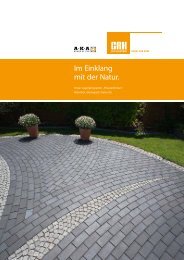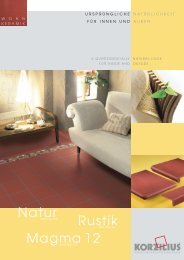Create successful ePaper yourself
Turn your PDF publications into a flip-book with our unique Google optimized e-Paper software.
Características técnicas Technical information<br />
CONSEJOS PARA LA COLOCACIÓN DEL PELDAÑO<br />
1. El soporte debe estar curado, seco y bien conformado. Especialmente la arista delantera.<br />
2. Efectuar doble encolado en los peldaños para garantizar que queda totalmente macizado.<br />
3. El perfil delantero debe descansar sobre el espesor de la tabica vertical. No quedará hueco entre la parte posterior del perfil<br />
y la arista del soporte. Existen dos opciones:<br />
1. Rellenar con el mismo material de agarre rellenando la parte trasera con lámina de porexpan.<br />
2. Rellenar con un material elástico.<br />
Así se garantiza el pegado contra la arista del soporte y queda sellada la posible entrada de agua.<br />
4. El espesor trasero del peldaño se independizará de la pared con porexpan de 1 cm y se rejuntará. Así la pieza puede absorber<br />
las dilataciones y se garantiza la no entrada de agua.<br />
5. La tabica puede montar sobre el peldaño inferior, igual que cuando se coloca un rodapié. Es imprescindible dejar junta entre<br />
peldaño y tabica, y si es posible rellenarla de un material elástico.<br />
6. Realizar juntas de dilatación cada 4 ml. y en los laterales, dejar fraguar antes de pisar.<br />
TIPS FOR LAYING STEP TILES<br />
1. The substrate should be properly formed, cured and dry, particularly its front edge.<br />
2. Use the floating and buttering method to lay the step tiles so as to ensure a void-free solid bond.<br />
3. The front edge of the step tile should rest on the top edge of the riser. There will not be space between back part of the edge<br />
and the support edge. There are two options:<br />
1. Fill in with the same material filling the back part with a porexpan sheet.<br />
2. Fill in with an elastic material.<br />
4. The back edge of the step tile should be kept separate from the wall by inserting 1cm of extruded polystyrene and then<br />
grouting the joint. In this way, any expansion will be absorbed and no water will filter through.<br />
5. The stair riser can be laid so that the bottom rests on the lower step tile, just as a skirting tile would be laid.<br />
6. Leave expansion joint every 4 ml, and wait until is completely dry before stepping the wings.<br />
OPCIÓN 1<br />
OPTION 1<br />
Rejuntado elástico<br />
Elastic groutings<br />
OPCIÓN 2<br />
OPTION 2<br />
Rejuntado elástico<br />
Elastic groutings<br />
Buena consolidación de arista<br />
Good consolidation of the edge<br />
Bien macizado mediante<br />
doble encolado<br />
Well filled by double adhesive<br />
Buena consolidación de arista<br />
Good consolidation of the edge<br />
Bien macizado mediante<br />
doble encolado<br />
Well filled by double adhesive<br />
Rejuntado elástico<br />
Elastic groutings<br />
Cemento cola o mortero<br />
Tile adhesive<br />
Lámina porexpan<br />
Porexpan plate<br />
Material elástico<br />
Elastic material<br />
Cemento cola o mortero<br />
Tile adhesive<br />
JUNTAS DE DILATACIÓN<br />
EXPANSION JOINT<br />
190





